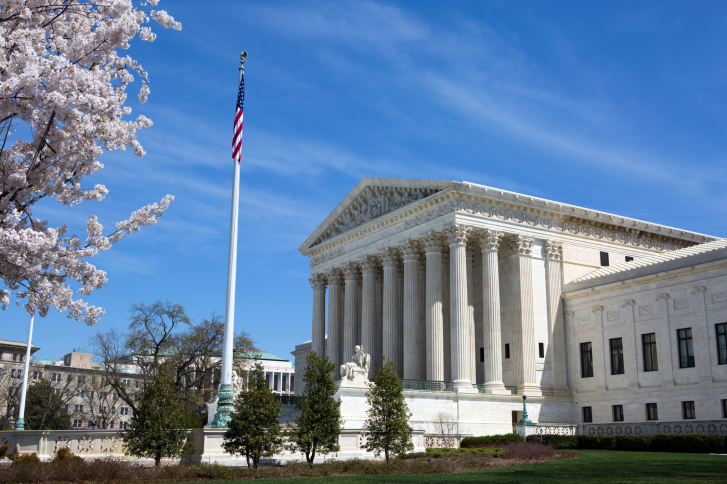If a new school choice survey in Kentucky were a weather forecast, the outlook would be “sunny and hot.”
According to the survey, released August 3 by the Friedman Foundation for Educational Choice and a coalition of nine state and national education policy groups, more than eight of 10 likely voters in the state would opt out of traditional public schools if given the opportunity to do so. Only 13 percent of respondents indicated they would choose a regular public school for their child. Currently, more than 90 percent of those children attend government-run public schools.
Respondents were asked: “If it were your decision and you could select any type of school, what type of school would you select in order to obtain the best education for your child?” Forty-nine percent would choose private schools; 23 percent homeschooling; 14 percent government-run public schools; 11 percent charter schools; and 3 percent virtual schools.
Along with continually building awareness of the need and desire for school choice, the survey also serves as “an assessment and an educational tool—a forecast of the possibilities of educational choice, if you will,” said Paul DiPerna, Friedman’s director of partner services.
Kentucky is one of only four states without any kind of school choice law on the books, and one of only 10 without charter schools. The state has more than 400 private schools, many serving low-income, special-needs students.
‘Frustrated With the System’
The fact that 11 percent of respondents chose charter schools—even though none exist in Kentucky—is significant, said Richard G. Innes, an education analyst for the Bluegrass Institute, a think tank in the state.
“A lot of these respondents likely don’t even know what charter schools are, which shows how frustrated they are with the system now,” Innes said. “Plus, there’s been much confusion about what charter schools entail.”
A charter school bill, based on model legislation created in 1995 by the American Legislative Exchange Council, has been prefiled for the 2010 session of the Kentucky General Assembly. Sponsor state Rep. Stan Lee (R-Lexington) also filed similar legislation last year.
“We’ve got to do more than just throw money at the problems of our education system,” Lee said.
Think Tanks Join Black Leaders
In an effort to gain the support of black parents for school choice policies, the Bluegrass Institute has joined forces with the Kentucky Education Restoration Alliance, a group of black pastors, civil rights activists, and retired educators in Louisville, home to the state’s largest school district, with 98,000 students.
The group’s acronym—KERA—is the same as that of the highly touted Kentucky Education Reform Act, which black leaders say has failed to improve key areas for students in their communities, including raising graduation rates, lowering dropout rates, providing services for special-needs students, and addressing family issues that affect children’s learning.
Although few Kentuckians are fully knowledgeable about charter schools, they are frustrated to the point of being willing to move to more innovative educational models, said KERA Chairman and Midwest Church of Christ Pastor Jerry Stephenson.
“If you ask African-Americans about a proposal that would improve their education—they will say ‘Yes, let’s try it,’ even if they don’t know what it is,” Stephenson told an education forum at the Midwest Church of Christ on August 24.
The forum was attended by local elected officials—including representatives from the Louisville Metro Council and Jefferson County Public Schools—and featured presentations by Innes and the Friedman Foundation.
‘Widespread’ Failure
Earlier that day, KERA and the Bluegrass Institute held a joint press conference in front of the Jefferson County schools’ district office to release a new report on the state’s 34 “Tier 5” schools. These schools—22 of which are in the Jefferson County Public Schools district—have failed to make Adequate Yearly Progress mandated by their No Child Left Behind goals for at least six years.
While public school administrators often blame learning-disabled students for their schools’ inability to meet NCLB goals, Innes found that of Kentucky’s 34 very lowest-performing schools, 29 failed student groups other than the learning disabled.
“Failure with other student groups is widespread in Kentucky’s Tier 5 schools,” Innes said. “The problem is a lack of leadership, not special-needs children.”
Innes says 24 of the 34 schools had the same principal during the 2008-09 school year as in 2006-07.
Minorities Joining Movement
The survey results indicate support for school choice is increasing in the minority community. Only 7 percent of likely black voters prefer regular public schools, 50 percent want private schools, 47 percent favor tax credits for individuals and businesses funding private school scholarships, and 14 percent chose charters.
“Rich or poor, Republican or Democrat, rural or urban, the results are clear: Voters want more options in the education of their children,” DiPerna said. “The support for school choice concepts—such as tax credits, vouchers, and charter schools—cuts across numerous demographic groups.”
Jim Waters ([email protected]) is director of policy and communications at the Bluegrass Institute for Public Policy Solutions in Bowling Green, Kentucky.
For more information …
“Kentucky’s Opinion on K-12 Education and School Choice,” by Paul DiPerna, Friedman Foundation for Educational Choice, August 3, 2009: http://www.bipps.org/files/29/KY%20Survey%20Embargoed.pdf
Kentucky BR 115: http://www.lrc.ky.gov/record/10RS/HB21.htm



